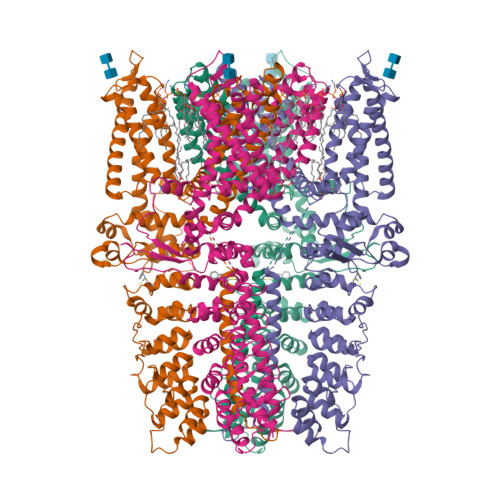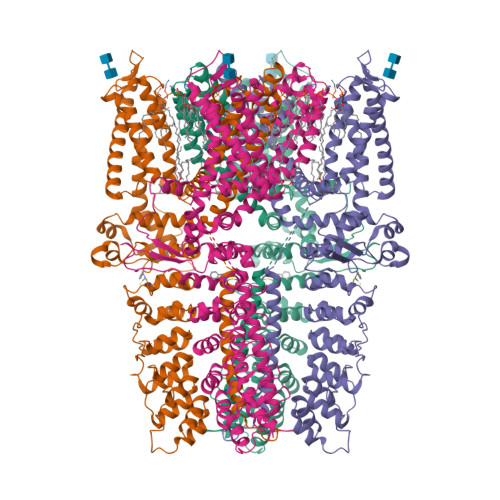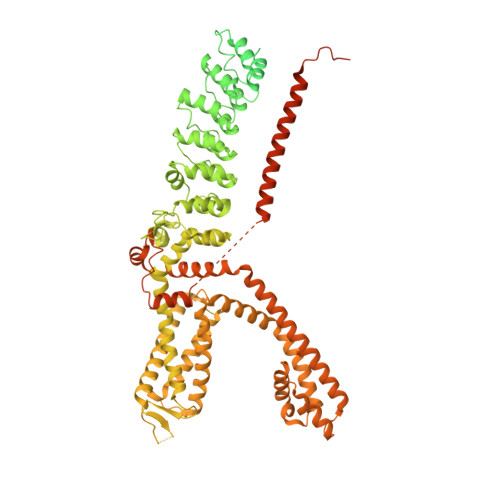Structural Insights into Electrophile Irritant Sensing by the Human TRPA1 Channel.
Suo, Y., Wang, Z., Zubcevic, L., Hsu, A.L., He, Q., Borgnia, M.J., Ji, R.R., Lee, S.Y.(2020) Neuron 105: 882
- PubMed: 31866091
- DOI: https://doi.org/10.1016/j.neuron.2019.11.023
- Primary Citation of Related Structures:
6PQO, 6PQP, 6PQQ - PubMed Abstract:
Transient receptor potential channel subfamily A member 1 (TRPA1) is a Ca 2+ -permeable cation channel that serves as one of the primary sensors of environmental irritants and noxious substances. Many TRPA1 agonists are electrophiles that are recognized by TRPA1 via covalent bond modifications of specific cysteine residues located in the cytoplasmic domains. However, a mechanistic understanding of electrophile sensing by TRPA1 has been limited due to a lack of high-resolution structural information. Here, we present the cryoelectron microscopy (cryo-EM) structures of nanodisc-reconstituted ligand-free TRPA1 and TRPA1 in complex with the covalent agonists JT010 and BITC at 2.8, 2.9, and 3.1 Å, respectively. Our structural and functional studies provide the molecular basis for electrophile recognition by the extraordinarily reactive C621 in TRPA1 and mechanistic insights into electrophile-dependent conformational changes in TRPA1. This work also provides a platform for future drug development targeting TRPA1.
Organizational Affiliation:
Department of Biochemistry, Duke University School of Medicine, Durham, NC 27710, USA.






















